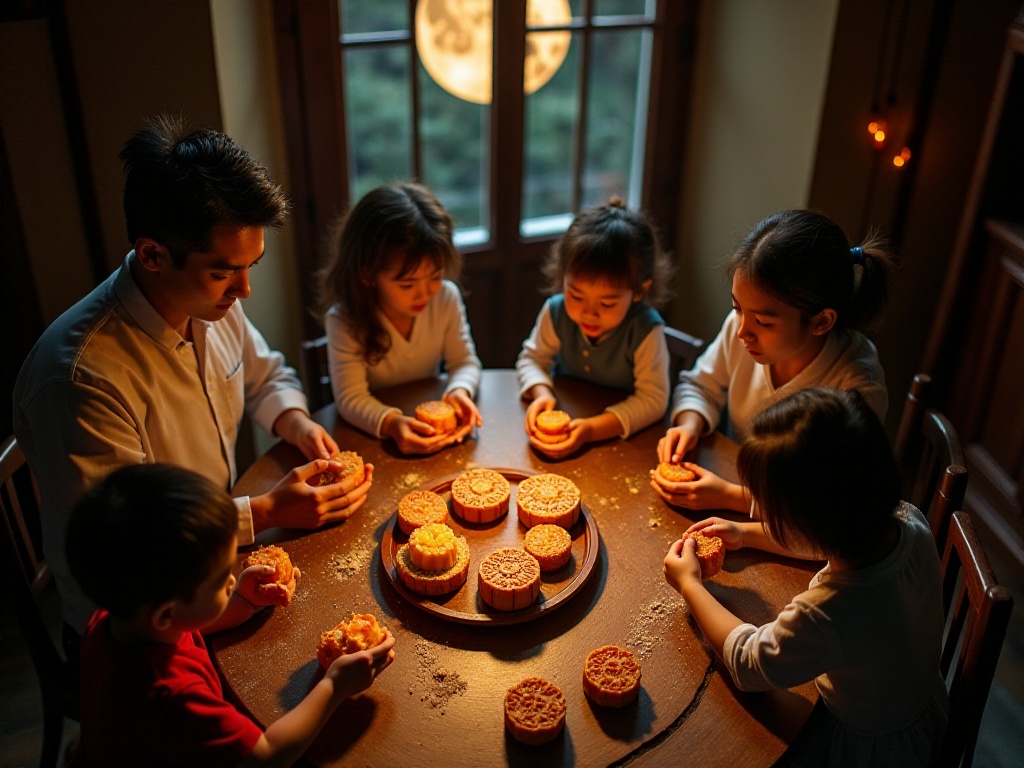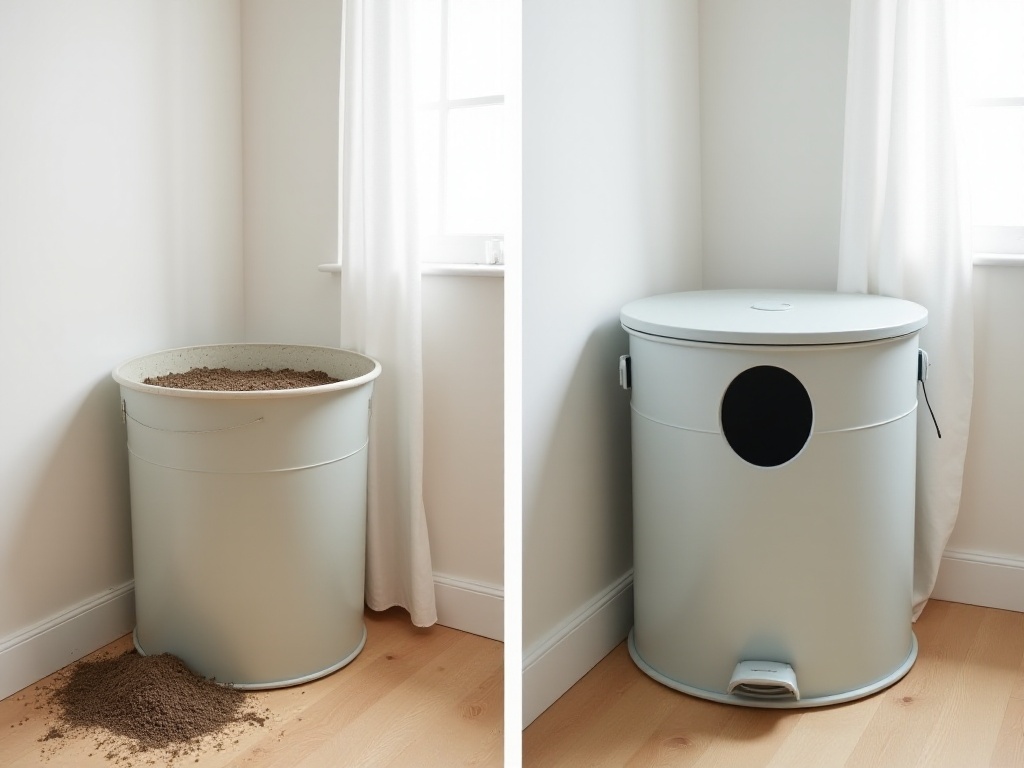Opening Thoughts
Recently, I've been reflecting on how young people nowadays are busy watching TV series and short videos, relying on takeout and semi-prepared foods even during the New Year festival. The festive atmosphere is truly fading. However! The scene of the whole family gathering to make dumplings on New Year's Eve still moves me deeply!
I actually learned to make dumplings from my Northeastern grandmother since childhood - she was a true dumpling expert. Every New Year, our family would make two to three hundred dumplings, and what a spectacular scene it was! Today, I'll share my years of experience with everyone, guaranteeing that the dumplings you make following this method will earn thumbs up from your whole family!
The Science of Dough
Speaking of dough making, that's quite a tale of hardship! I remember my first attempt at making dough - it was a complete disaster: the dough was hard as a rock, impossible to knead, and I could only watch helplessly as that lump of dough ended up in the trash. After countless failures (truly countless, I've lost track of how many batches of dough I've discarded), I finally developed a perfect recipe!
To make good dough, first you need to choose the right flour. With so many types of flour in the supermarket, which one should you choose? Let me tell you, medium-gluten flour is the best choice for dumplings! Through repeated experiments, I've found that 500 grams of medium-gluten flour with 250 milliliters of warm water is the perfect ratio - the dough won't be too hard or too soft, it's perfect!
The warm water is really important, don't underestimate it! Water temperature around 35 degrees Celsius is ideal - it should feel warm to the touch but not hot. Why use warm water? Because cold water makes the dough too hard, while hot water damages the gluten protein, affecting the dough's elasticity. Using warm water makes the dough particularly elastic, resulting in wrappers that are both thin and chewy.
There's also a trick to mixing the dough: first use chopsticks to thoroughly mix the flour and water until it forms small lumps, then knead with your hands. This not only prevents flour from getting everywhere but also ensures more even water distribution. When kneading, push the dough outward forcefully, then fold it, push again, fold again, repeating this for about seven to eight minutes until the dough surface is smooth, like a baby's soft cheeks.
The kneaded dough needs to rest - this is a crucial step for improving the dough's texture! Wrap the dough tightly in plastic wrap and let it rest for twenty to thirty minutes. At this point, the dough will feel particularly elastic, as if it's had a spa treatment, its entire state will be different.

The Art of Filling
The dumpling filling can be said to be the soul that determines how delicious the dumplings are! My family's tradition is chive and pork filling, a recipe passed down through three generations.
Let's talk about the meat filling first - you must choose pork that's 30% lean and 70% fat, this ratio is absolutely perfect! The fat makes the filling more fragrant and tender, but not too fatty, otherwise it'll be too greasy when cooked. It's best to buy meat and chop it yourself - the ground meat from supermarket machines is too fine, the texture is completely different.
Choosing chives is also particular - you must pick fresh green chives with straight leaves that look fresh and vibrant. Chives are best used right after cutting, as they'll oxidize and turn black if left too long, and they'll also release water. When cutting chives, use a sharp knife and cut cleanly in one stroke - this preserves the maximum amount of fragrance.
Seasoning is a science! Besides the usual salt, cooking wine, and light soy sauce, I also add a bit of white pepper powder - this is the secret weapon for enhancing aroma. I also add a pinch of sugar, which balances the sharp taste of chives and creates a more balanced flavor.
The most important is the mixing technique for the filling. Many people just stir it a few times and call it done, which results in a loose filling texture. The correct method is to stir with chopsticks in one direction, like whipping cream, you need to stir vigorously in the same direction. How much stirring is enough? When the filling becomes sticky, can be formed into balls, and holds its shape when released, that's about right.
There's also a special trick: add a little starch and oil at the end of mixing. The starch makes the filling more cohesive and less likely to fall apart; the oil makes the filling more tender and smooth, and the cooked dumplings will have more juice.

Wrapping Techniques
Now we come to the most exciting part - wrapping the dumplings! Honestly, when I first started wrapping dumplings, the shapes were terrible, all crooked and twisted, like some kind of art piece. But after so many years of practice, now my dumplings look like they've come out of a mold, each one perfectly standard.
First is dividing the dough, which seems simple but has its techniques. Each small piece of dough should be about 25 grams, which makes the perfect size wrapper when rolled out. Roll the dough into a long strip, then cut it into evenly sized pieces, and roll each piece into a ball. At this point, note that the dough surface should be smooth, without cracks.
Rolling the wrappers is a real skill! I've seen many people use too much force, resulting in wrappers that are too thin and break during cooking. The correct method is: apply even pressure with the rolling pin, and make the middle slightly thicker than the edges. Specifically, first flatten the dough ball, then roll from the middle outward with the rolling pin, rotating the wrapper after each roll - this makes evenly rolled wrappers.
When adding filling, the amount should be appropriate, generally about 15 grams per wrapper is ideal. The placement of the filling is also crucial - it should be placed slightly below the center of the wrapper, which makes for better-looking dumplings. Many people like to overstuff the filling, resulting in wrappers that won't close or break during cooking.
For the wrapping technique, I recommend the "two-hand pinch" method - it's the most practical. First fold the wrapper in half but don't completely close it, then start from one side using your thumb and index finger to make pleats. With each pleat, pull the wrapper in slightly - this makes dumplings that stand up well and don't break during cooking.
The number of pleats is also particular - generally 10-12 pleats per dumpling is ideal. Too few pleats don't look good, too many can tear the wrapper. And the pleats should be even and consistent in size to look refined.

The Key to Boiling
The boiling process is a crucial moment that can make or break a pot of good dumplings! I've summarized several super practical tips that guarantee your dumplings will have chewy skins and juicy fillings when cooked this way.
First, the water volume should be sufficient, preferably covering the dumplings by a good margin. After the water boils, stir with a large spoon to create a whirlpool, then put the dumplings in - this prevents them from sticking to the bottom.
When adding dumplings, don't dump them all in at once! Add them one by one gently, following the direction of the water flow - this prevents them from sticking together. After adding them, gently stir to prevent sticking to the bottom.
After the water boils, add half a bowl of cold water - this is the famous "three boils and three adds" method. Why do this? Adding cold water suddenly lowers the temperature, making the dumpling skins contract and become more chewy. The sudden temperature change also creates a thin layer of soup between the skin and filling, making them more flavorful.
How do you know when they're done? After the third boil, when the dumplings are floating on the surface, gently poke them with chopsticks - if the skin feels elastic, they're done. At this point, immediately remove them with a strainer, otherwise overcooking will make the skins fall apart.

Storage Tips
Making dumplings is usually done in large batches, more than can be eaten at once. So how do you store them to maintain their best condition? I've developed a complete storage solution!
First, place the wrapped dumplings on a plate dusted with dry flour, leaving space between them so they don't touch. Then put the plate directly in the freezer for 3-4 hours until the dumplings are completely frozen before bagging them.
Why do this? Because if you bag freshly wrapped dumplings for freezing, they'll stick together, and when you want to eat them, you'll have to force them apart, likely breaking the wrappers. But if you freeze them first then bag them, they won't stick together.
Bagging also has its techniques - best use sealable bags and try to squeeze out as much air as possible. This prevents the dumplings from getting too dry during freezing. It's also best to divide them into small packages of 15-20 dumplings each, so you can take out just enough for one meal without having to thaw the entire bag.
Frozen dumplings can be stored for about a month. But it's best not to store them too long, as the wrappers will become very dry and the texture will deteriorate. Also, if frozen too long, the filling will lose moisture and won't be as tender and juicy.

Experience Summary
Making dumplings that the whole family praises really requires attention to many details. From making the dough to final storage, every step is important. But once you master these key points, you'll quickly become your family's dumpling expert!
You might not believe it, but according to the Chinese Culinary Association, the nation consumes tens of billions of dumplings during the Spring Festival period - that number is astounding! Just in Northeast China, an average family makes about 200 dumplings on New Year's Eve. These numbers all demonstrate one thing: dumplings are no longer just food, they carry too many Chinese people's expectations and memories of family reunion.
Every time I see the whole family gathered around making dumplings, chatting and laughing happily together, it feels especially warm. Grandmother makes the most beautiful dumplings, mother wraps them the fastest, father's aren't pretty but he's very careful, and even my brother who usually stays out of the kitchen comes to help knead dough and roll wrappers. These happy moments are truly priceless.
How about it? After reading this article, are you eager to try it yourself? Actually, in dumpling making, the most important thing isn't technique, but the inheritance and dedication. As long as you're willing to spend time practicing, you'll soon be able to make great dumplings. After all, sharing leads to progress, and exchange leads to growth - let's pass on this traditional culinary art together!







